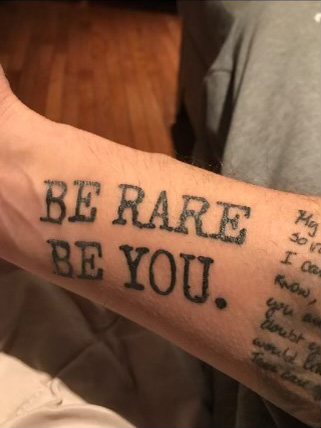Fabry disease is a serious genetic disorder that can lead to life-threatening heart and kidney problems.
Fabry disease is a serious genetic disorder that can lead to life-threatening heart and kidney problems. People who have Fabry disease don’t have the enzymes that break down lipids or fats. These fats collect in blood vessels and tissue, raising the risk of heart attack, stroke, and kidney failure. Fabry disease has a wide range of symptoms including chronic pain, hearing loss, gastrointestinal problems, kidney damage and a decreased ability to sweat. Symptoms may develop during childhood (classic type) or middle adulthood (atypical type).
Fabry is a progressive disease that worsens over time. There is no cure, but treatments like enzyme replacement therapy (ERT) can help manage the disease and reduce the odds of serious complications.
Fabry has taken a toll on Matt and his family. Matt’s Mom was diagnosed with kidney failure at age 50 and started dialysis.
Her health continued to decline. Seven years later, following heart valve replacement surgery, she died due to sepsis, a severe infection that spreads via the bloodstream. At the funeral service, Matt’s brother, Steven, mentioned he didn’t feel well and complained of burning hands and feet. A family friend urged Steven to go to the ER when he returned home. He was diagnosed with Fabry. Twelve hours later, he was on dialysis with 5% kidney function. A week after their mother’s funeral, Steven, Matt and his sister were diagnosed with Fabry. Looking back at his Mom’s symptoms, it made sense she had Fabry, but Matt’s Mom was never tested. They treated her symptoms without the benefit of a diagnosis. Matt wonders if early treatment could have made a difference.
Doctors kept a close eye on Matt’s kidney function and other Fabry markers. He suffered nerve pain in his limbs and teeth. “My tooth nerve pain was so bad, it felt like the dentist was working on my teeth with no anesthetic. Fabry meant sleepless nights, back pain and psoriasis.” To help relieve Fabry symptoms, Matt started biweekly enzyme replacement therapy, (ERT). ERT restores levels of a key enzyme, alpha-galactosidase A. It allows the body to break down lipids. Matt built his life around these biweekly five-hour IV infusions. Work, vacation, travel; there was no skipping a session or postponing a treatment. If Matt wanted to protect his quality of life, precisely scheduled ERT infusions were a must. “Without the infusions, I wouldn’t be able to run my painting business, golf, snowboard or go out with friends and family. I had a few adverse reactions in the beginning, but after ten years, my body has adapted.”

Matt and his wife wanted to start a family and move to Alberta. The doctors advised, with the Fabry diagnosis, it was highly unlikely they could have their own family. The news was hard to take; one more way Fabry interfered with the life they planned. Knowing they wouldn’t have a family of their own, Matt and his wife moved to Alberta to watch their great nieces and nephews grow up. The move was pivotal for Matt. He had been on a kidney transplant waiting list for years. One evening, the phone rang at 11pm. It was the hospital. “We have a kidney for you. Be here by 6:30 a.m. tomorrow morning.” Matt had a new kidney by noon the next day. The surgery went well, but there were issues, post-transplant. Matt ended up back in the hospital with sepsis, just like his Mom. It was hard for Matt not to think of his mother’s fate. Matt focused on staying positive as his doctors focused on treating the infection. They performed tests, adjusted his medications and things improved for a while. “I was so relieved to recover, but I knew it wasn’t a good sign. “Seven months after my transplant, I was told I’m at the beginning stage of rejection. That was not what I wanted to hear. I will stay positive every day, as I have from the start of my Fabry diagnosis.”
“Most people I interact with don’t know I’m sick. As real as Fabry’s symptoms are, to many, Fabry is invisible.” Matt recalls his Mom’s advice, “You never know what people are going through on a daily basis.” Matt lives with Fabry every day. He understands the compromises, the uncertainty, the worry. It is why he’s an advocate for the Canadian Fabry Association. In fact, he likes their slogan so much, he proudly wears it as a tattoo, “Be Rare. Be You.”